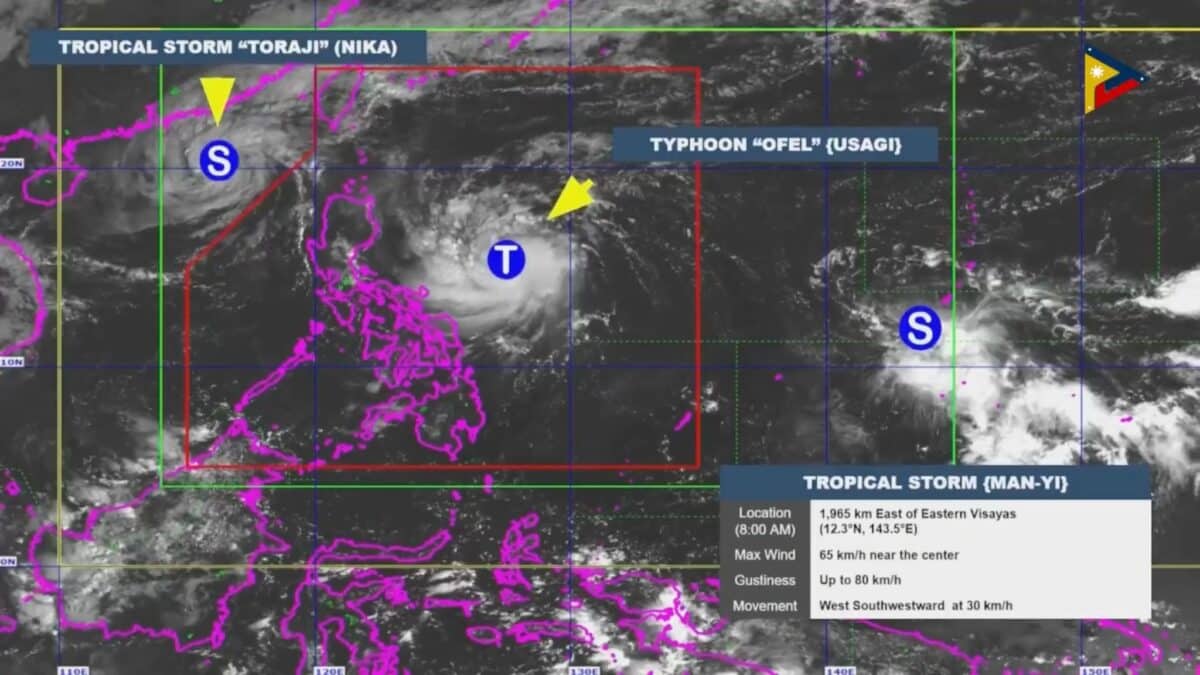


Screenshot from Civil Defense PH/Facebook
MANILA, Philippines — A state weather bureau specialist pointed to the edge of a high-pressure area north of the country as a factor behind the recent series of tropical cyclones that hit Northern Luzon.
In the region, Severe Tropical Kristine (international name: Trami) made landfall in Isabela on October 24, Typhoon Marce (Yinxing) in Cagayan on November 7, and Typhoon Nika (Toraji) in Aurora on November 11.
Article continues after this ad
Additionally, as Super Typhoon Leon (Kong-rey) made landfall in Taiwan, the cyclone caused severe weather over Northern Luzon until it left the Philippine Area of Responsibility (PAR) on November 1.
READ: Typhoon Ophel maintains strength over PH Sea; Signal No. 2 up in 2 areas
Weather specialist Chris Perez of the Philippine Atmospheric, Geophysical and Astronomical Services Administration (Pagasa) said the tropical cyclones were largely forced westward by the edge of a high-pressure area north of the country.
Article continues after this ad
“Because the edge of a high-pressure area is in this northern part, the cyclones cannot move north, but instead move west,” Perez said on Wednesday, November 13, during a press conference led by the Office of Civil Protection.
Article continues after this ad
Typhoon Ofel (international name: Usagi) is on track to make landfall along the eastern coast of Isabela or Cagayan on Thursday afternoon, according to Pagasa’s cyclone bulletin issued Wednesday evening at 8 p.m.
Article continues after this ad
In addition, a tropical storm outside PAR with the international name Man-yi is expected to enter the country’s area of responsibility on Thursday and also make landfall in Luzon on Saturday or Sunday.
When Man-yi enters the PAR, he is given the local name Pepito.
Article continues after this ad
Marcelino Villafuerte II, Pagasa Deputy Administrator for Research and Development, noted that the number of tropical cyclones entering PAR in November exceeds their predictions.
“We predict one to two tropical cyclones for the month of November. But now it’s almost four. We’re waiting for Pepito. When the PAR comes in, it will be our fourth for the month,” said Villafuerte.
Cyclone forecast for December
Villafuerte then said the state weather bureau expected one or two tropical cyclones in December.
However, Villafuerte added that the onset of the northeast monsoon or “amihan” would force the cyclones to move south.
“Once the northeast monsoon starts and there is a northeasterly wind flow and it is well established, any tropical cyclones that form will move more southward,” he said.
Your subscription cannot be saved. Please try again.
Your subscription has been successful.
“It will be roughly the Visayas and Mindanao areas that could be affected if there were typhoons in December,” he added.
Leave a Reply